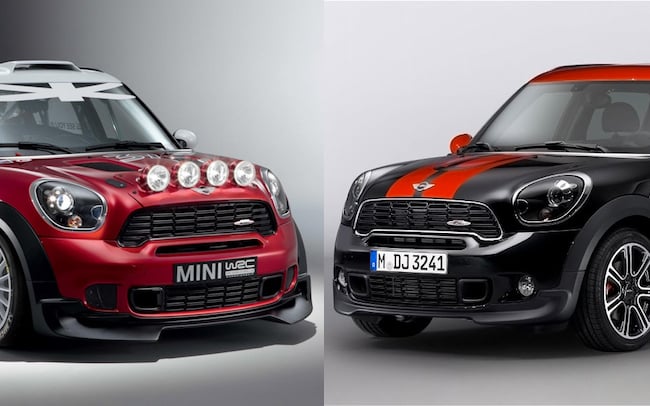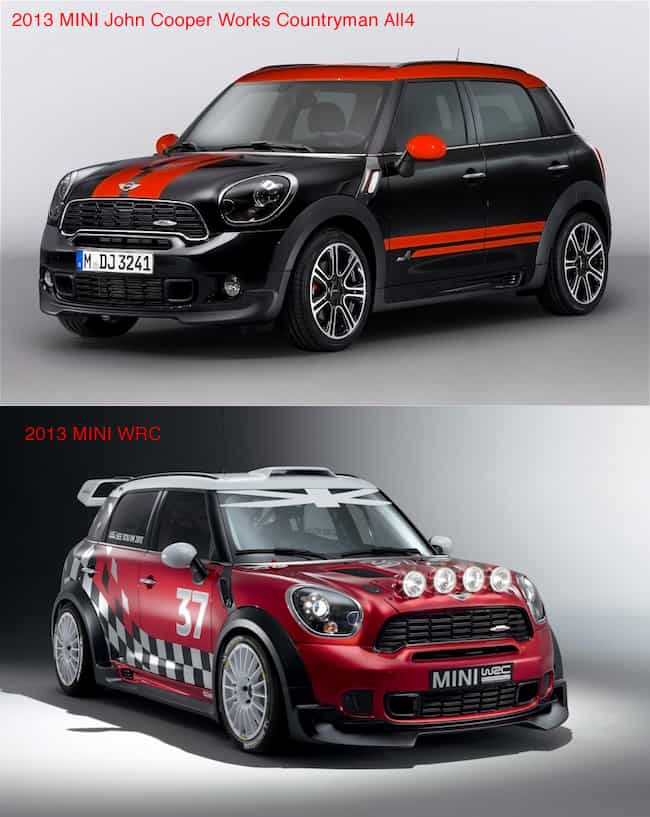Sure, the 2013 Mini WRC would leave the 2013 Mini JCW Countryman All4 in its wake on any type of road surface but with some minor tweaks, few would be the wiser
Kühtai, Austria — There are a number of specific reasons why a car manufacturer chooses to get involved in motorsports, but ultimately it all comes back to selling more cars. Over the years, BMW has shown a very cold and calculating approach to their participation, which makes sense from a business perspective, but has the capacity to leave hardcore fans a bit miffed.
When the company acquired the Mini brand in 1994, they also took control of a car with a rich racing history, particularly in rallying. The popular little car captured the win at the Monte Carlo Rally in 1964, 1965 and 1967, with disqualification due to a minor technical infraction causing the one miss during this streak.
It took some time for the handlers at BMW to pull the trigger, but the new Mini did finally return to the rally scene in 2011, was briefly run as a factory-funded effort last year and has since been made available to customer teams through the support of Prodrive, the outfit that used to run the factory Subaru WRC effort. The reason: In the Mini Countryman, they finally have a vehicle with which to showcase their off-road readiness.
All models in the Mini fleet are based on a front-wheel drive layout and the crossover variant is no different—the difference is that the Countryman is the first Mini available with an all-wheel drive system, dubbed All4. Said system is an on-demand set-up that automatically redistributes torque as conditions warrant. The system incorporates a centre differential that sends torque to the rear wheels and a rear differential with integrated electro-hydraulic clutch to manage the torque split.


The JCW Countryman works with the identical all-wheel drive system as its lower-powered compatriots, so there’s nothing new to report there. But there are enough changes to warrant some attention from serious driving enthusiasts—and some similarities to a new Mini rally car purpose-built for the modern era.
First off, although the engineers shied away from revealing exact figures, we can expect that the JCW Countryman All4 will have enough horsepower and torque to justify the badge. In the other Mini JCW models, the 1.6-litre turbocharged 4-cylinder develops 208 hp and 192 lb-ft of torque. Insiders suggested that the engine in the JCW Countryman will receive/has received some additional boost to compensate for the vehicle’s added weight.
Without question, during a test drive of the prototype that ran past a number of Tyrolean villages, weight did not seem to be a factor at all. In fact, the JCW Countryman fairly jumped out of the corners and sprinted off effortlessly, the combination of the added power, increased torque and well-sorted all-wheel drive system making very light work of the snow-covered roads. (Roads, it must be noted, that were giving other vehicles all sorts of trouble.)
Still, the road-going JCW Countryman would be no match for the Mini WRC (World Rally Championship) car, which possesses more power and a different all-wheel drive system.

The Mini WRC was developed to meet the FIA Super 2000 regulations, which were designed to attract more manufacturers by making the homologation process simpler and less expensive. One of the rules dictates that rally cars can run at a minimum weight of 1,200 kg—this alone gives the Mini WRC an advantage over the JCW Countryman All4, which tips the scales at 1,455 kg.
There are other differences: Although the Mini WRC works with the same engine, a Garrett turbocharger capable of up to 2.5 bar of boost has been attached; the turbo on the JCW Countryman, on the other hand, will likely be set to a maximum of 1.3 bar.

In addition, as the rally car will be going off-road far more frequently than the production version, the Mini WRC is equipped with permanent all-wheel drive rather than an on-demand system, and features a limited-slip differential at the front and back. (If the Mini is similar to other pro rally cars, the torque distribution is likely infinitely adjustable via the driver’s seat.)
Takeaway
Long story short, the 2013 Mini WRC would leave the 2013 Mini JCW Countryman All4 in its wake on any type of road surface and under any conditions. But if you strip out the production car’s interior, toss in a roll cage, apply some cool decals and a few other accoutrements, few would be the wiser.
2013 MINI John Cooper Works Countryman All4 vs. 2013 MINI WRC Gallery


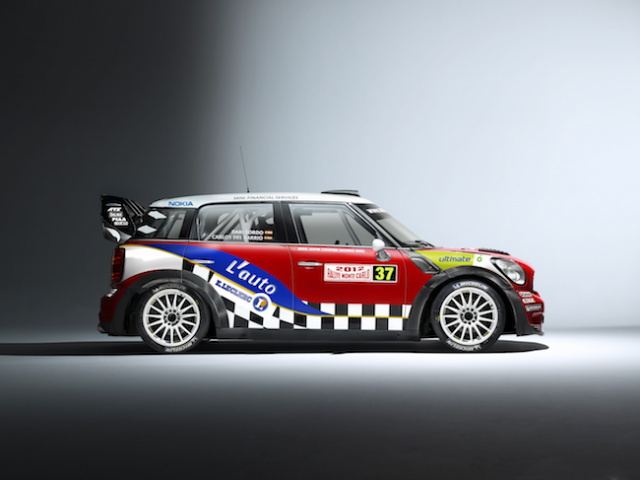

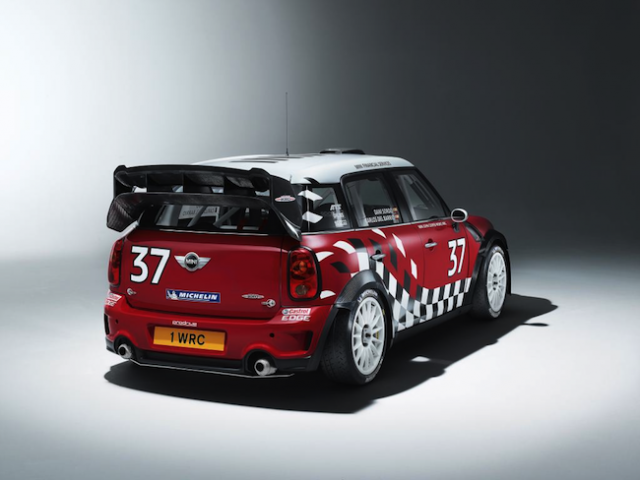

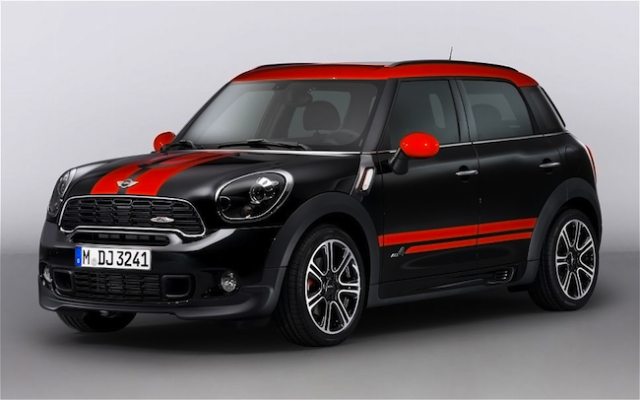
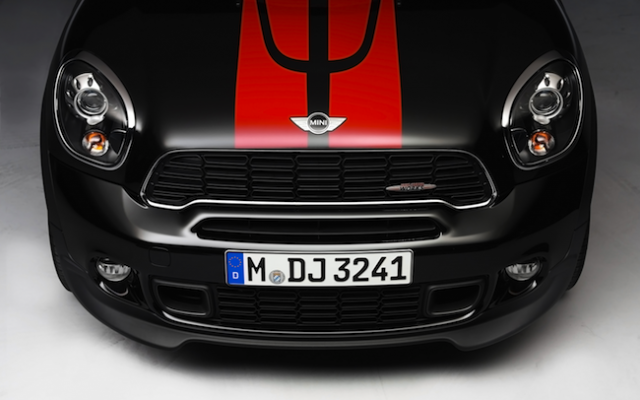
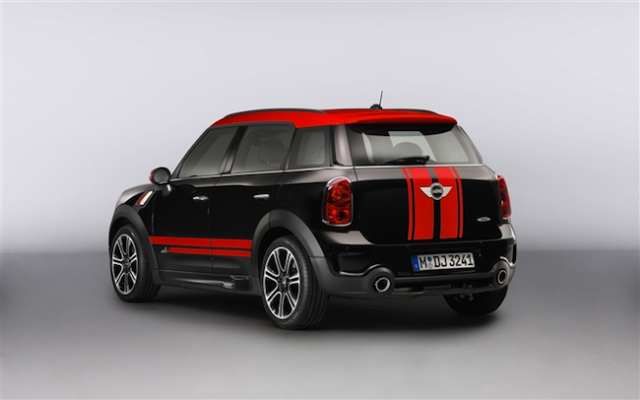

- 5.0K
- 5.1Kshares

